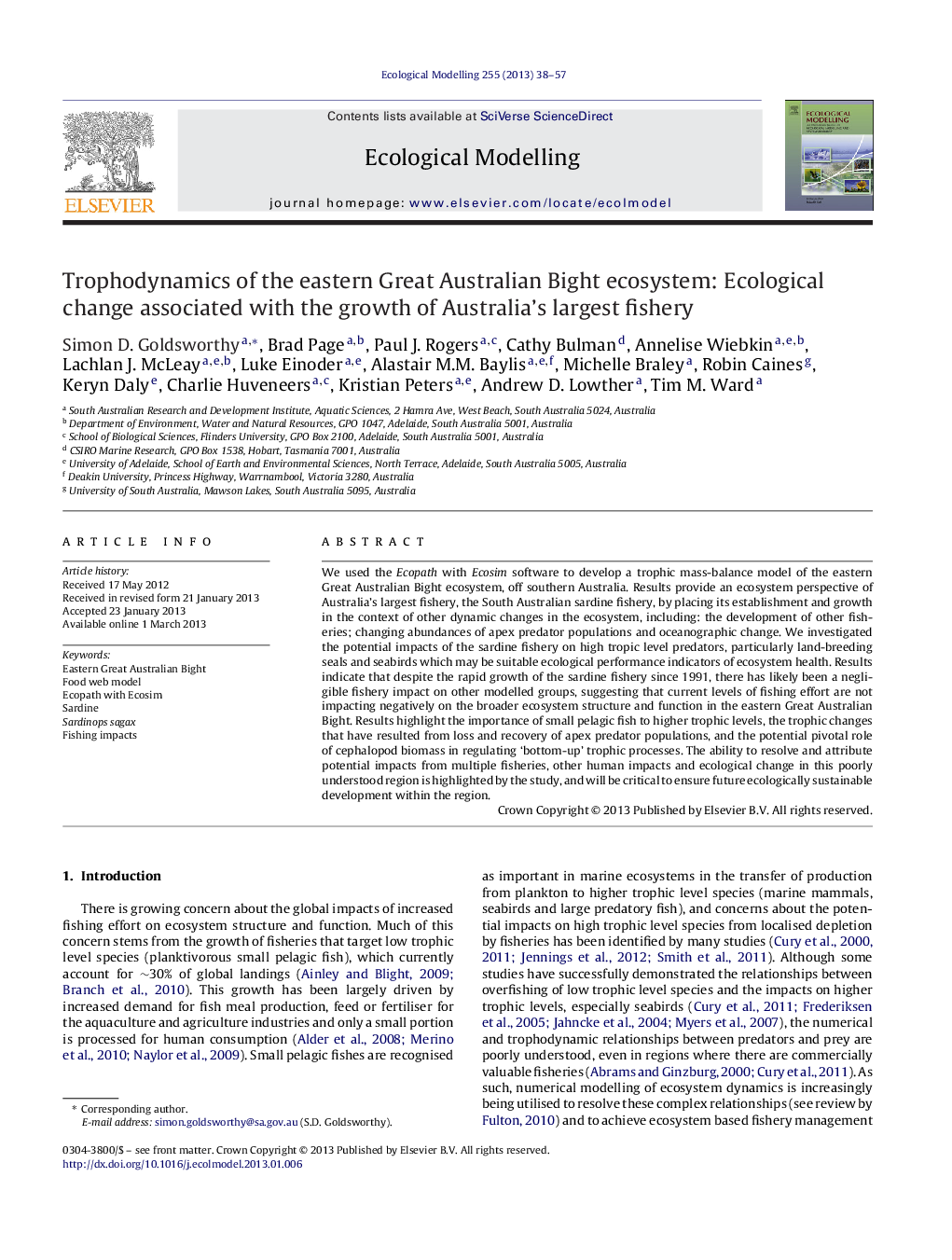| Article ID | Journal | Published Year | Pages | File Type |
|---|---|---|---|---|
| 4376118 | Ecological Modelling | 2013 | 20 Pages |
We used the Ecopath with Ecosim software to develop a trophic mass-balance model of the eastern Great Australian Bight ecosystem, off southern Australia. Results provide an ecosystem perspective of Australia's largest fishery, the South Australian sardine fishery, by placing its establishment and growth in the context of other dynamic changes in the ecosystem, including: the development of other fisheries; changing abundances of apex predator populations and oceanographic change. We investigated the potential impacts of the sardine fishery on high tropic level predators, particularly land-breeding seals and seabirds which may be suitable ecological performance indicators of ecosystem health. Results indicate that despite the rapid growth of the sardine fishery since 1991, there has likely been a negligible fishery impact on other modelled groups, suggesting that current levels of fishing effort are not impacting negatively on the broader ecosystem structure and function in the eastern Great Australian Bight. Results highlight the importance of small pelagic fish to higher trophic levels, the trophic changes that have resulted from loss and recovery of apex predator populations, and the potential pivotal role of cephalopod biomass in regulating ‘bottom-up’ trophic processes. The ability to resolve and attribute potential impacts from multiple fisheries, other human impacts and ecological change in this poorly understood region is highlighted by the study, and will be critical to ensure future ecologically sustainable development within the region.
► We present Ecopath with Ecosim models of the eastern Great Australian Bight ecosystem. ► We examine the potential ecological impacts associated with development of the SA sardine fishery. ► Results suggest current fishery is not impacting negatively on ecosystem structure and function. ► Ability to resolve/attribute impacts from multiple fisheries, crucial to ensure sustainability.
